I used to say that the Fujifilm 32-64 mm f/4 was the second best zoom I’ve ever used — after the Nikon 180-400/4. But then the Fuji 45-100 f/4 came along and I decided it was a two-way tie for second. The obvious standard for judging the new Fujifilm 30 mm f/3.5 is their great zoom, and that’s what this test is about. I used a low-contrast Siemens star for a target.
The scene, with the 30 mm f/3.5:
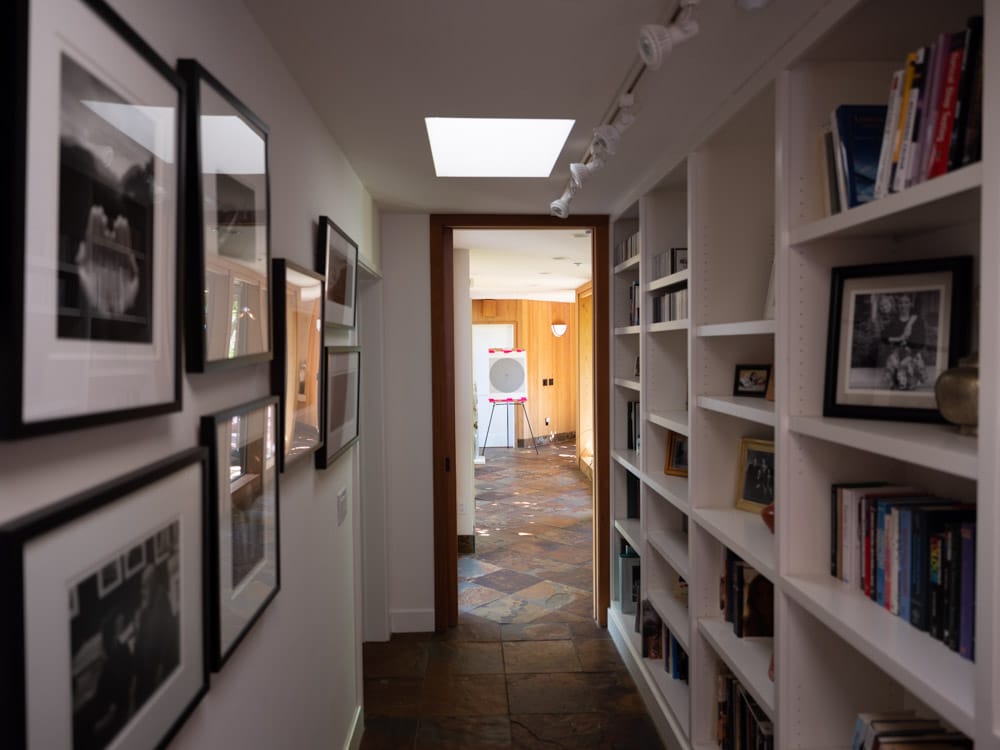
The details:
- GFX 50S
- ISO 100
- Various f-stops from f/3.5 or f/4 to f/11.
- Manual shutter speed for ETTR exposure
- Arca Swiss C1 cube on RRS legs
- Electronic shutter
- 2-second self timer
- Manual focusing at taking aperture for each shot
- Three captures per setting, pick the sharpest one
- Developed in LrC
- Adobe Color Profile
- White balanced to gray star background
- Sharpening amount 20, radius 1, detail 0
- Exported at a bit less than 200% magnification
In the center:
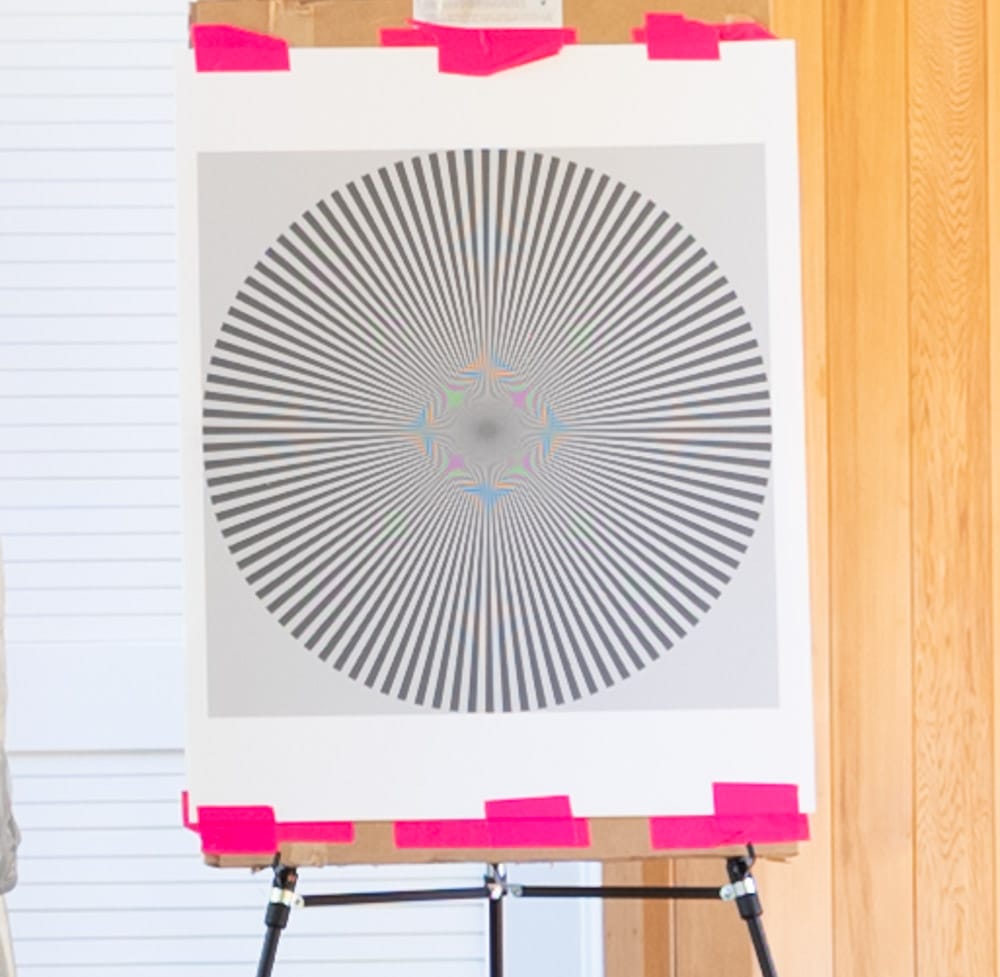
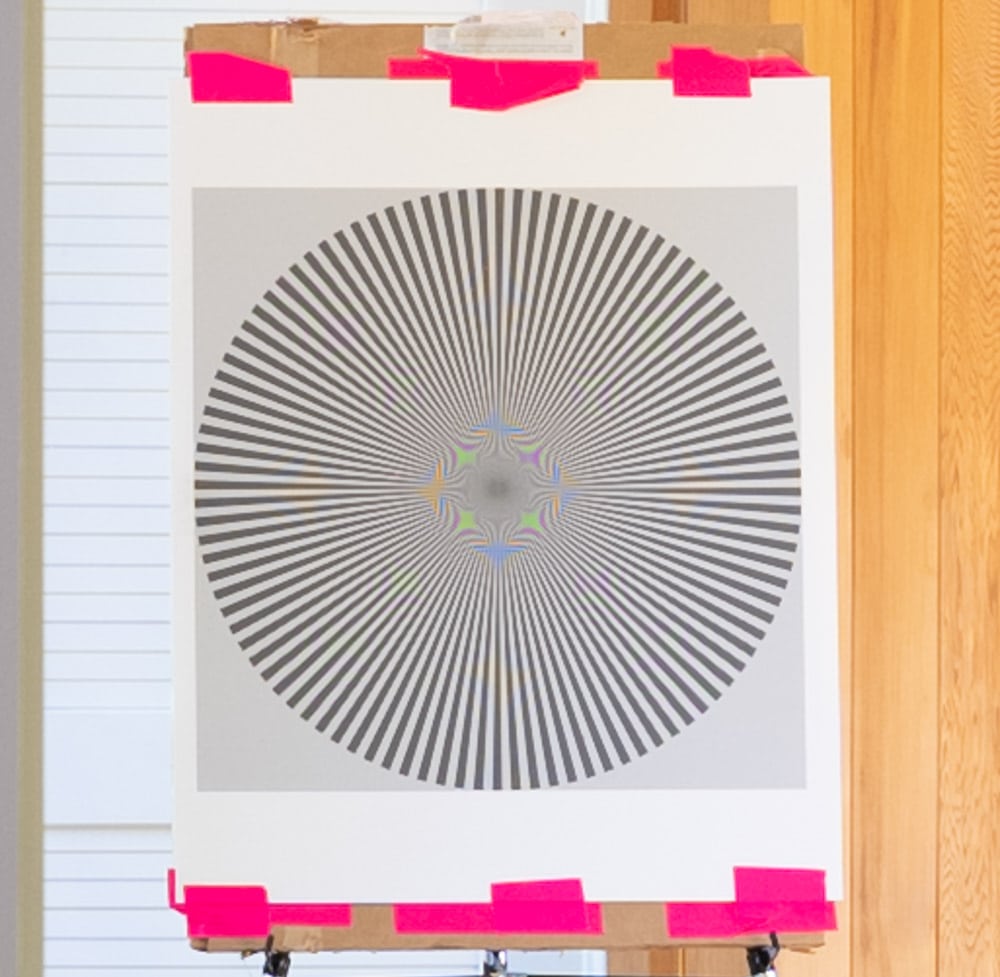
I call that a wash.
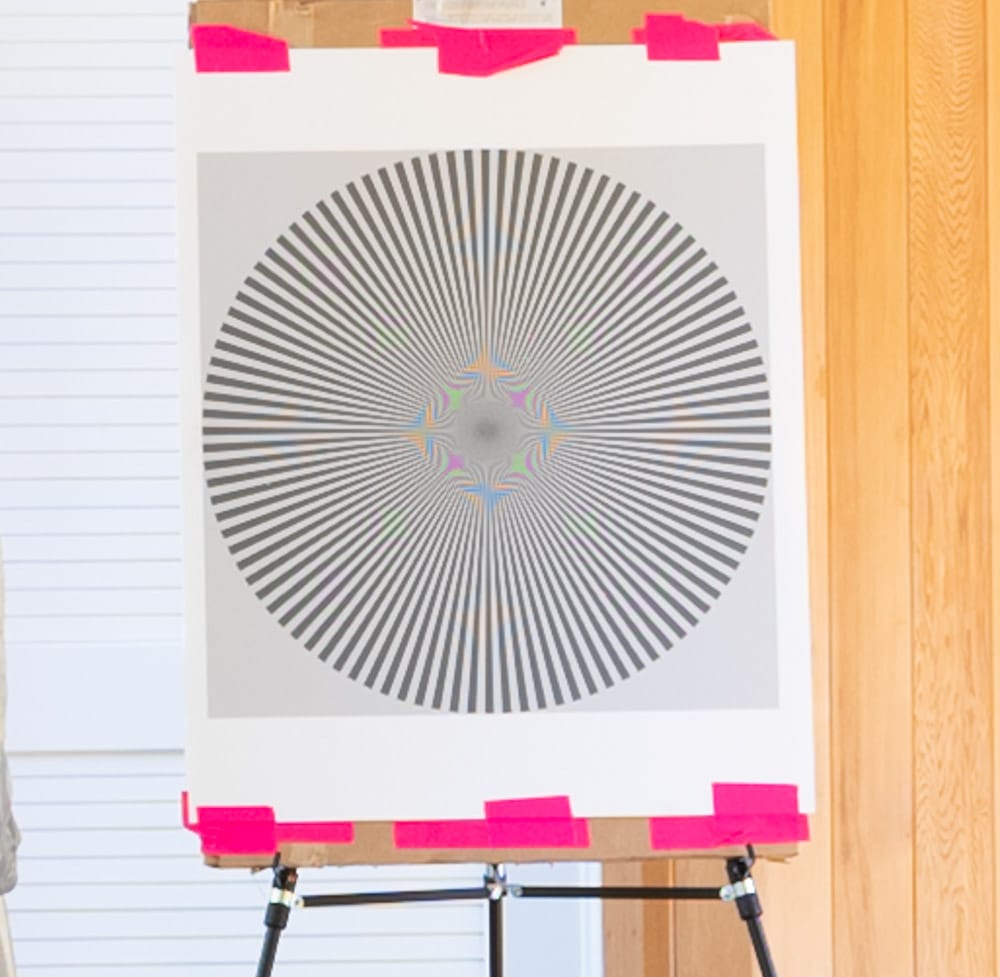
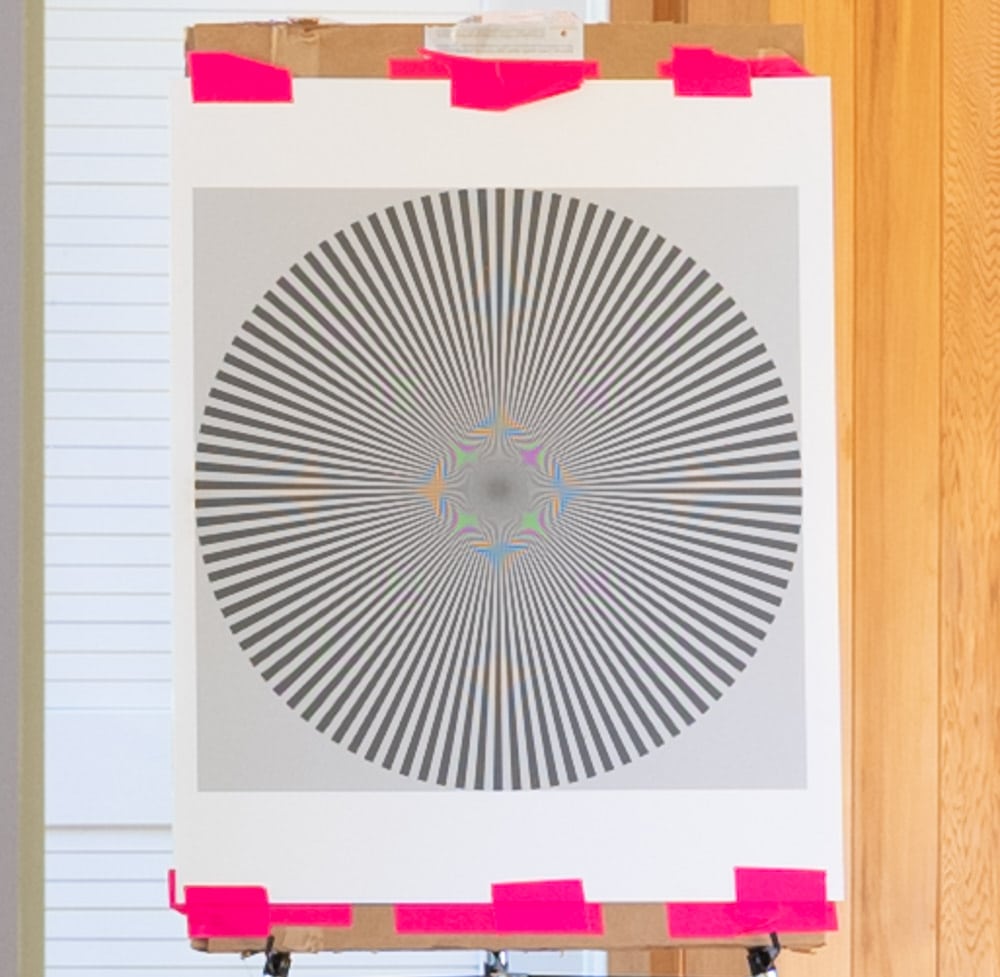
That, too.
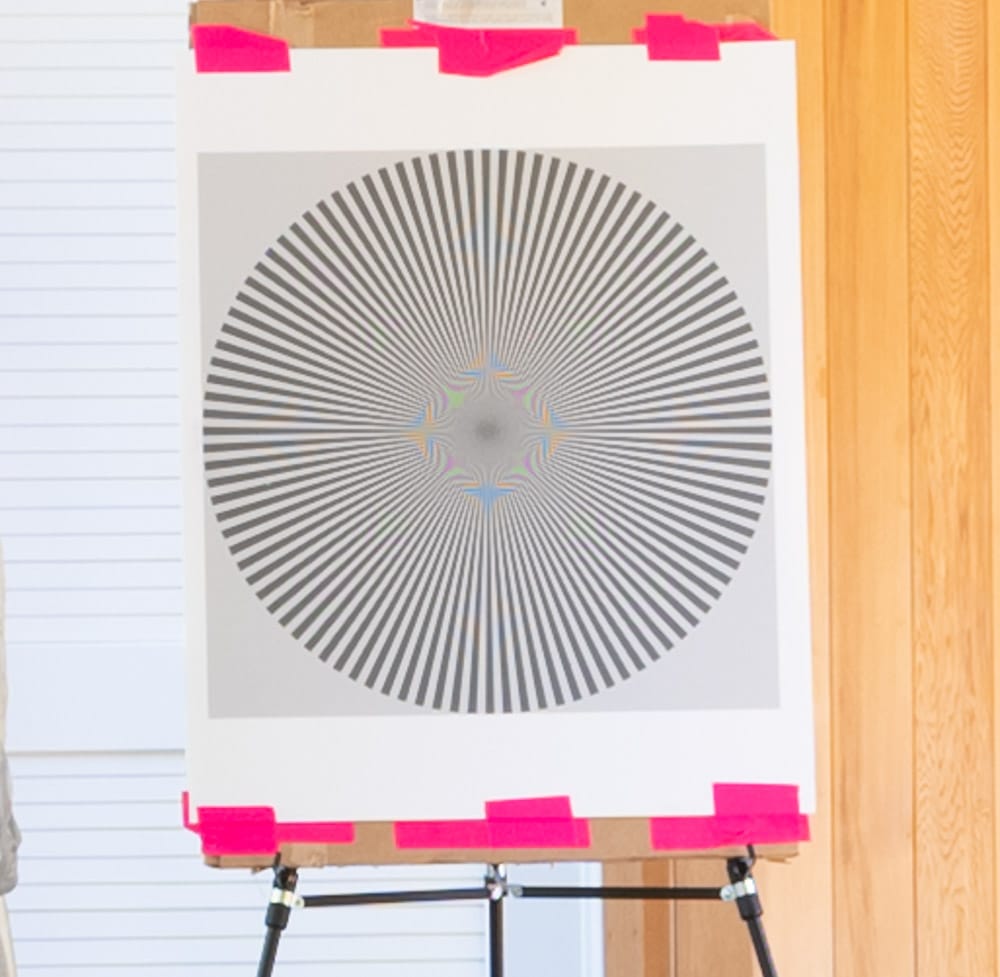
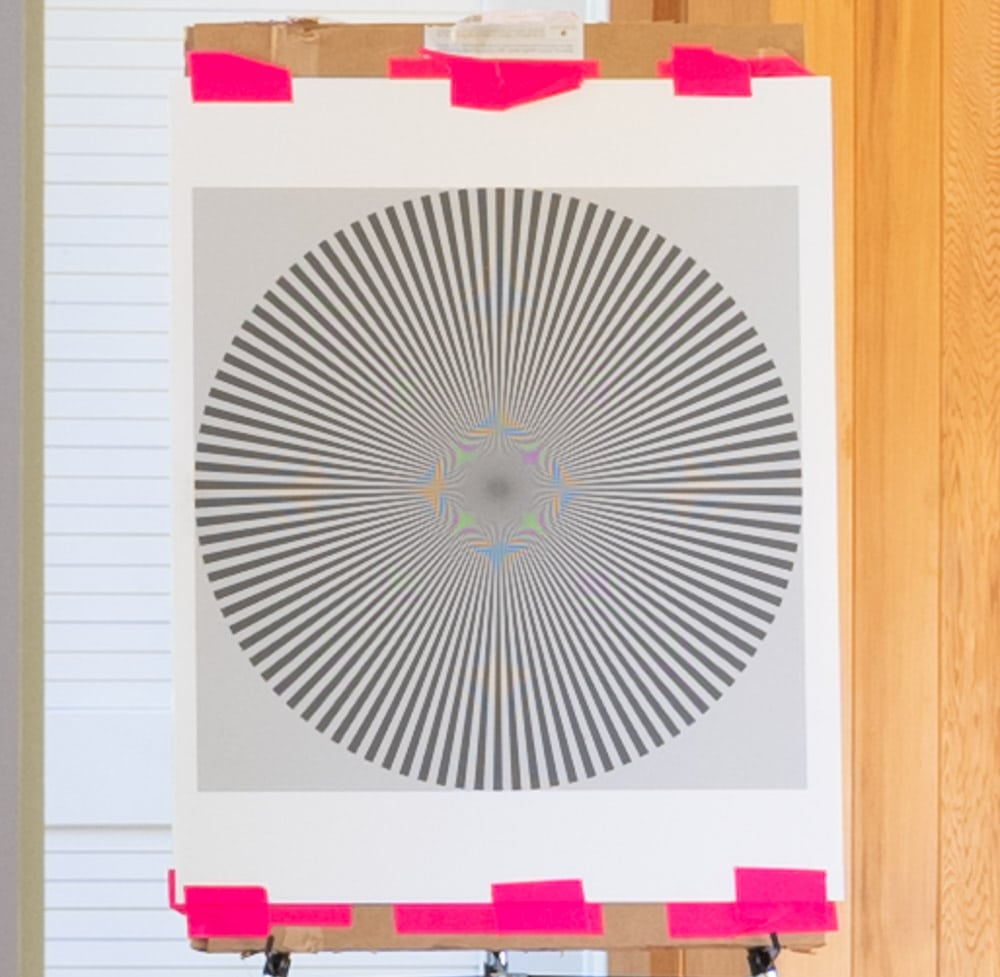
There seems to be a pattern here.
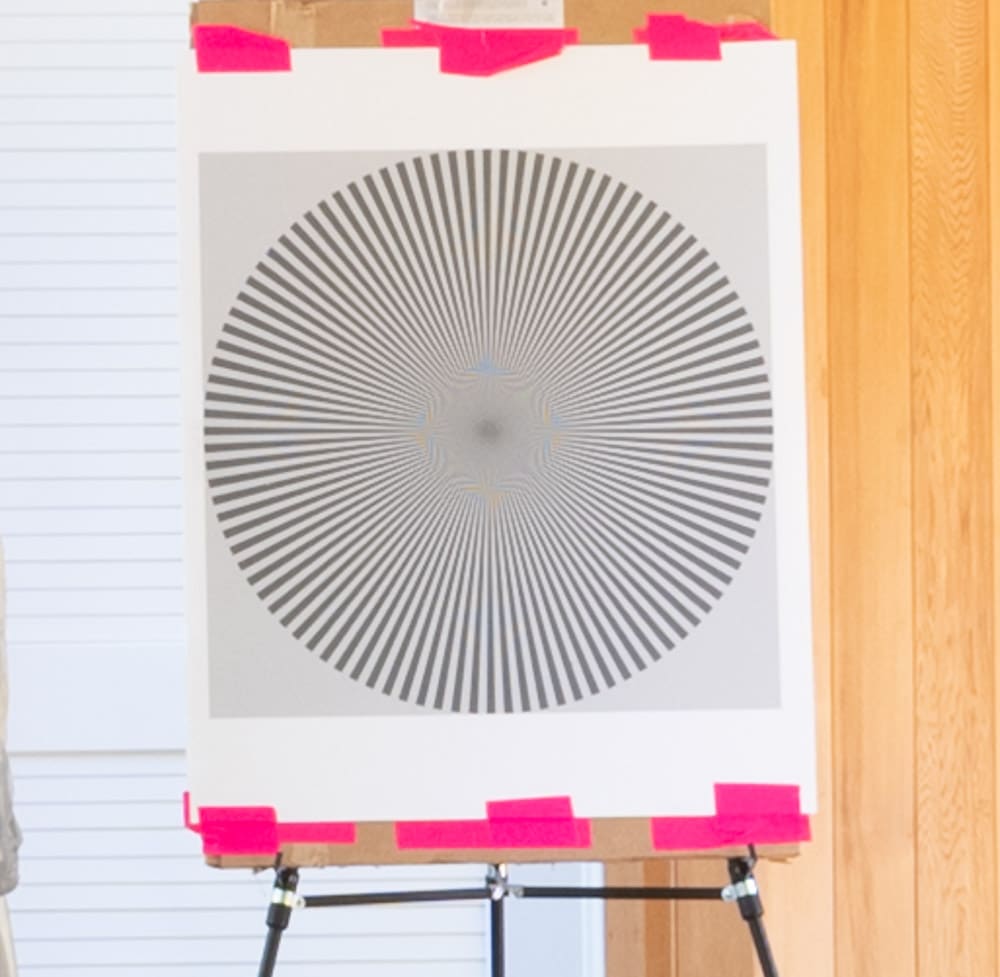
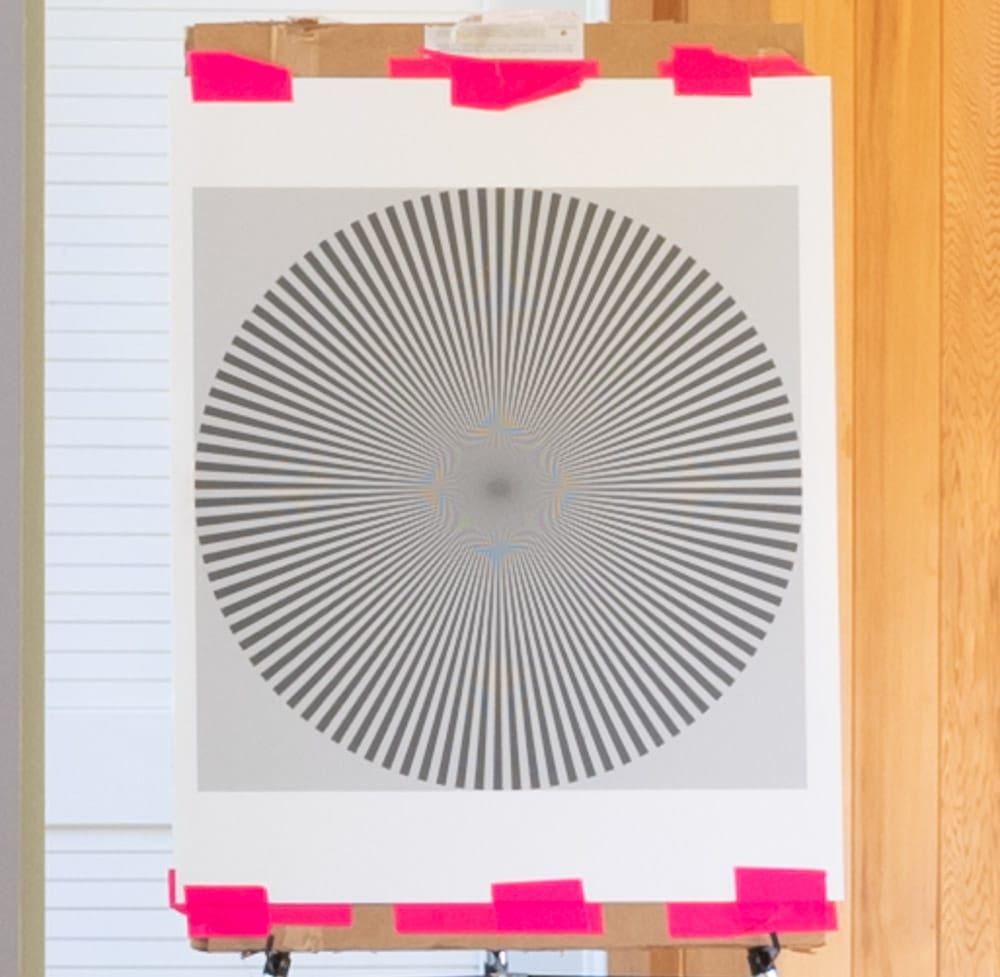
OK, in the center, there’s essentially no difference. How about in the upper right corner? The camera position remains the same for the next shots, but it is re-aimed to but the target in the corner.
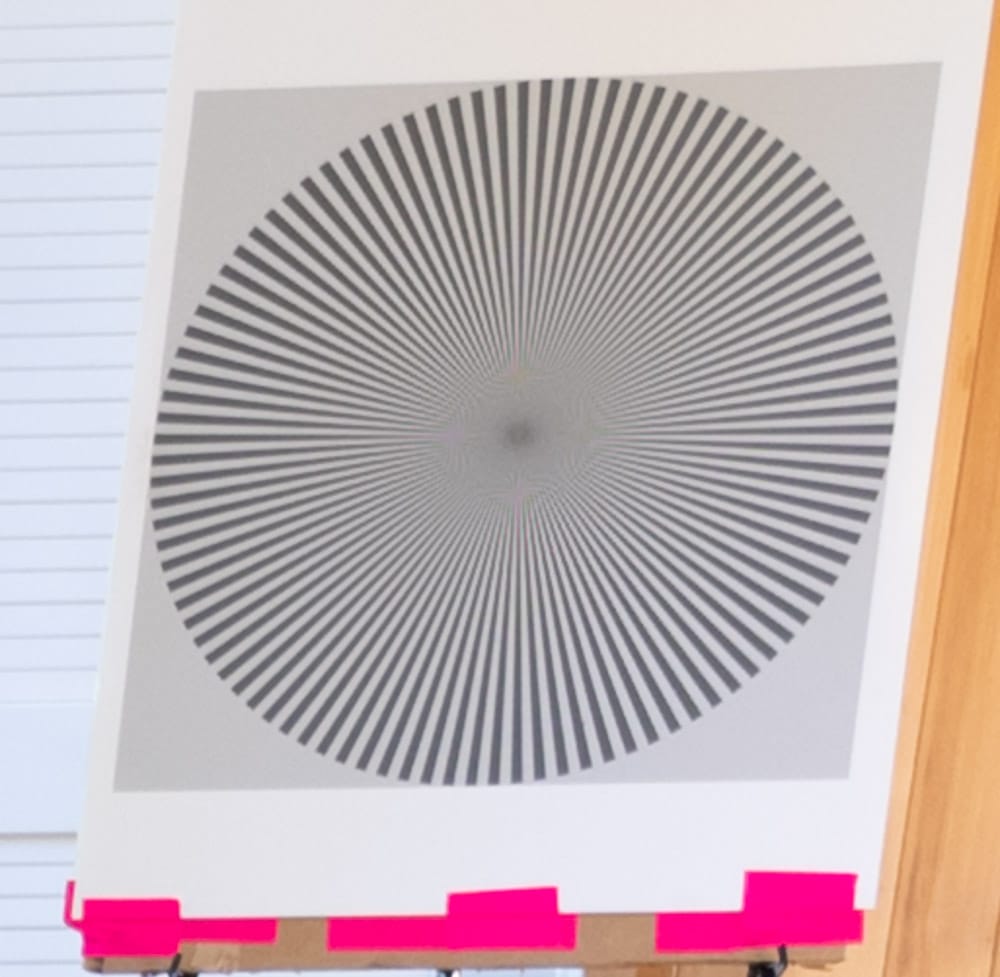
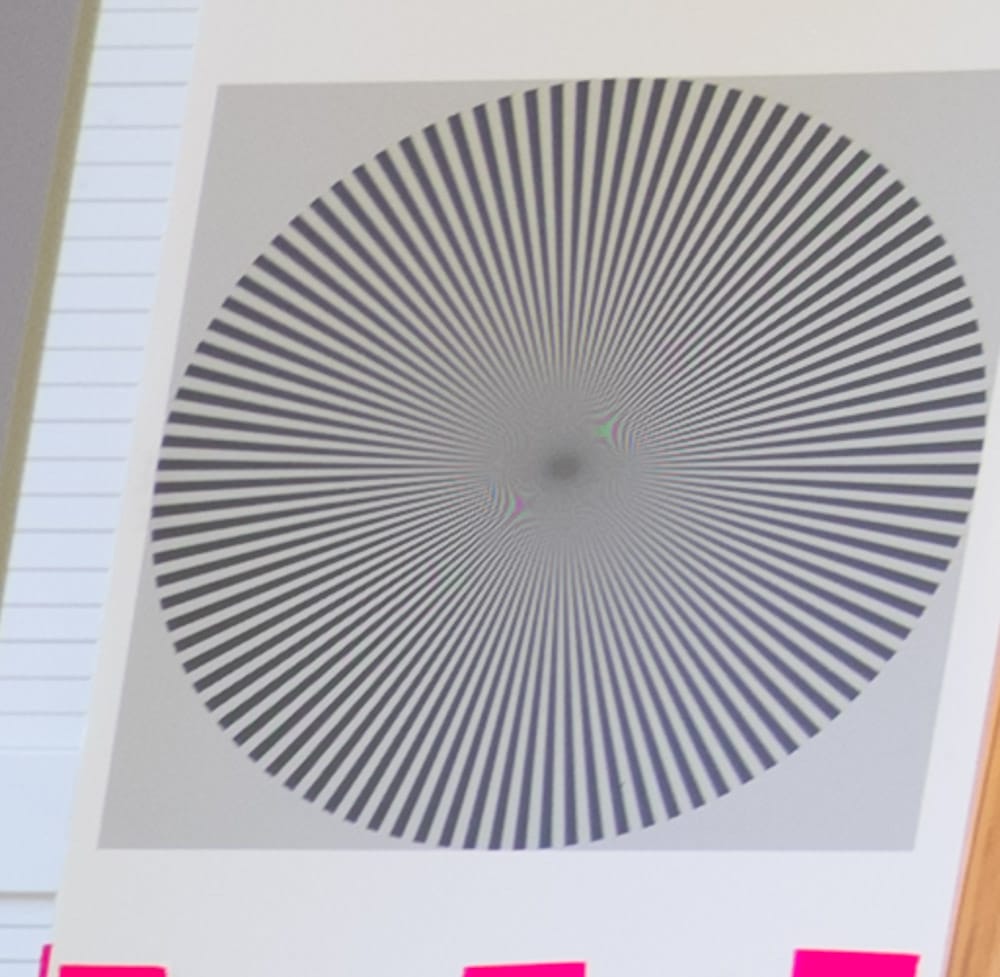
The zoom is a bit worse in the radial direction, but better tangentially.
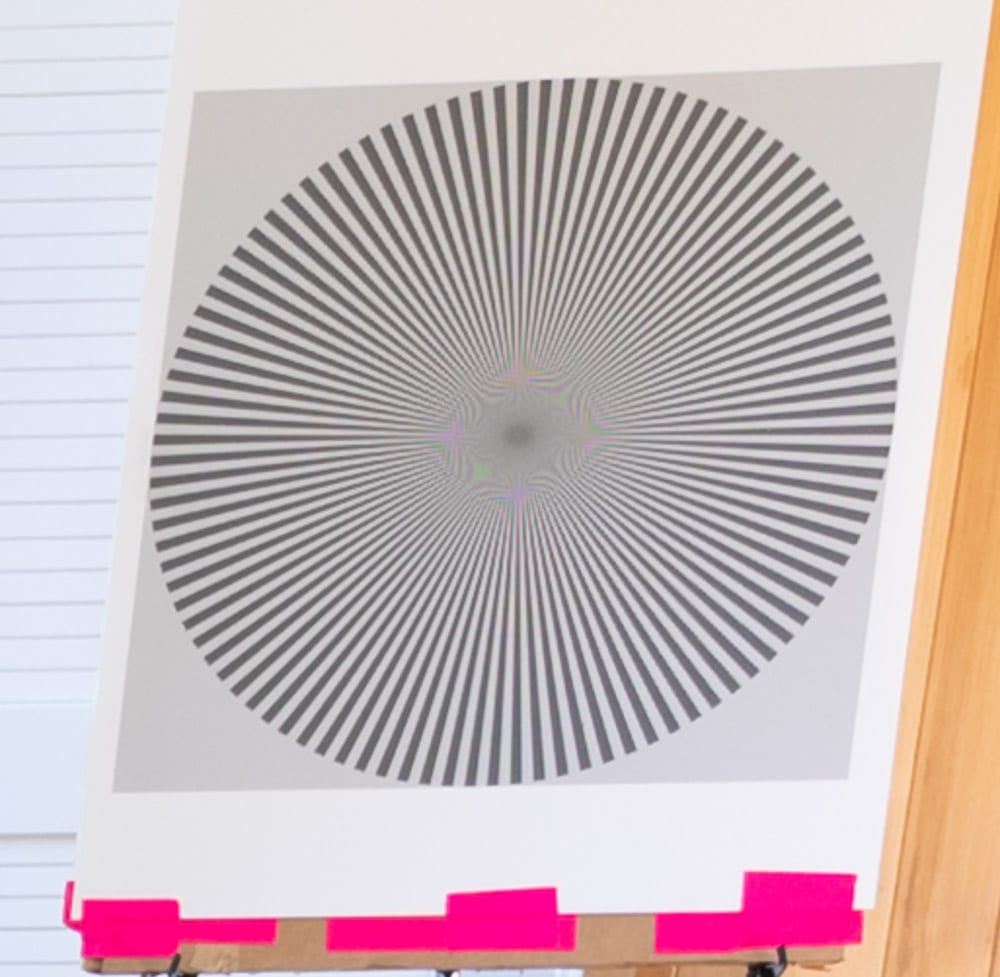
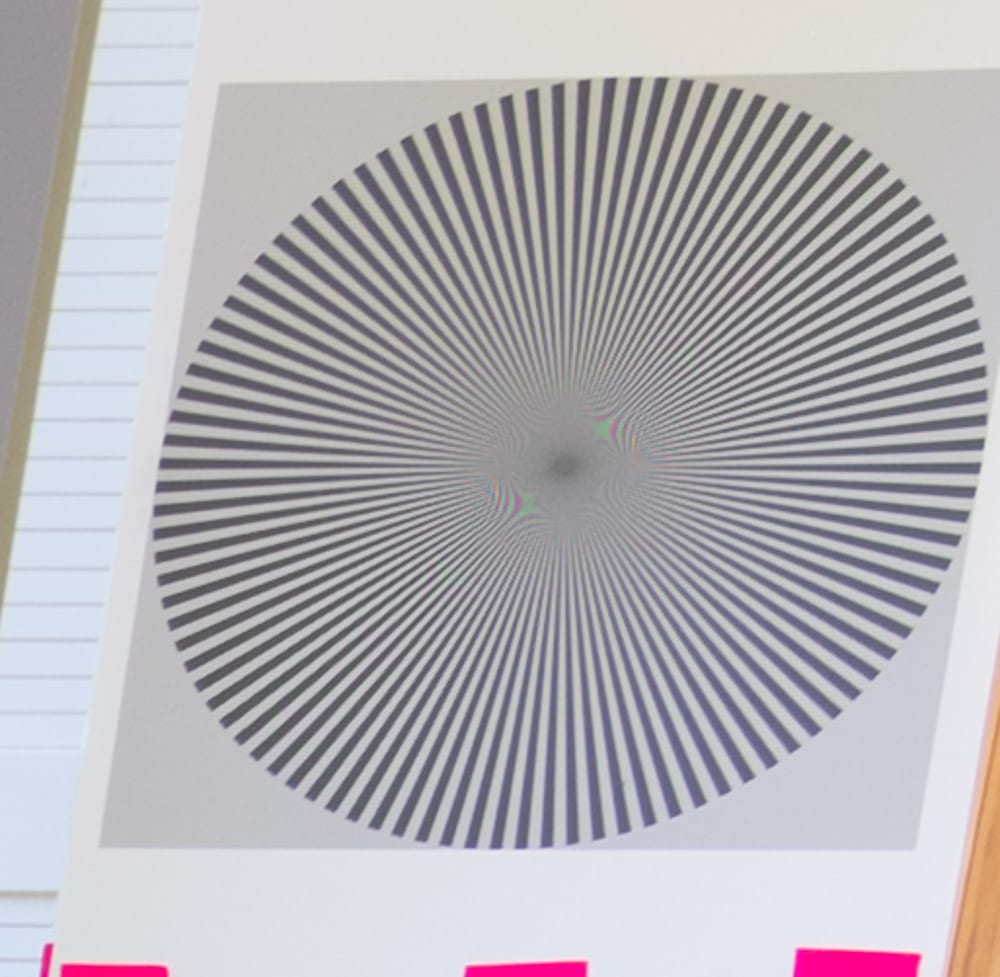
Now they’re about the same tangentially, but the prime lens is better radially. The 30 mm’s performance here is pretty impressive.
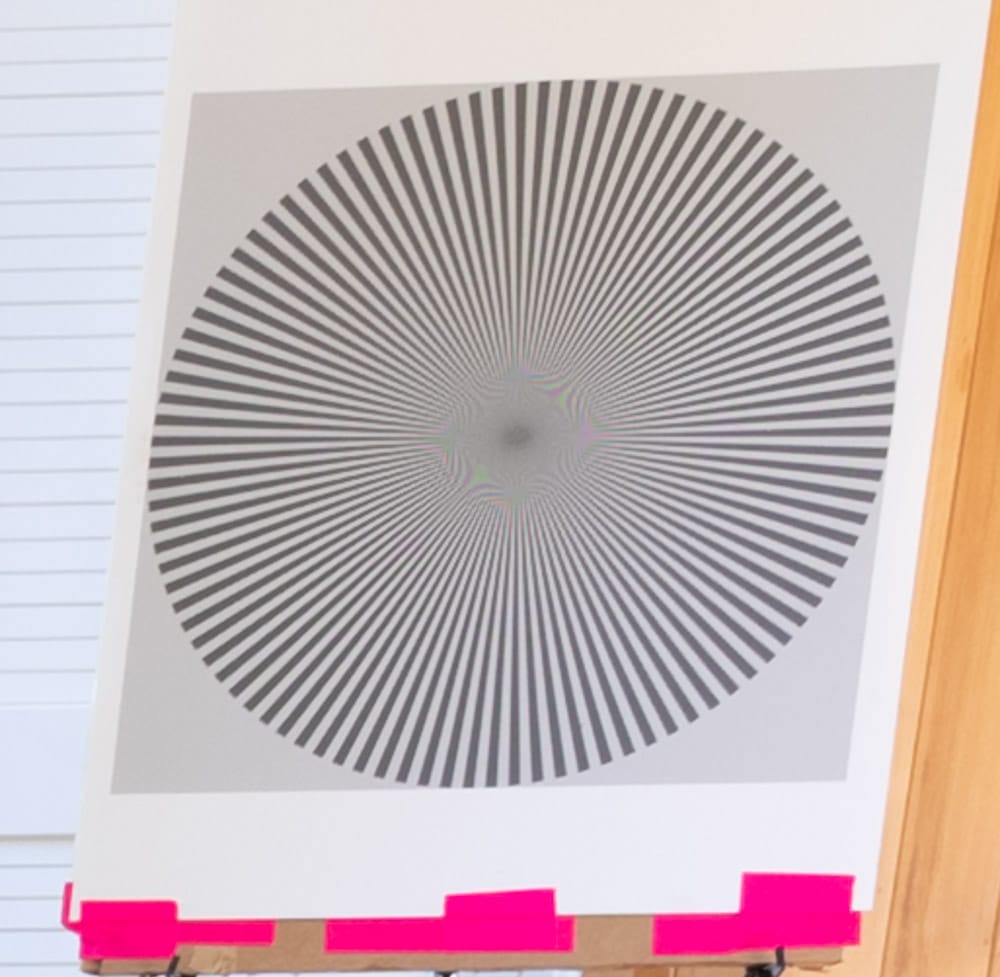
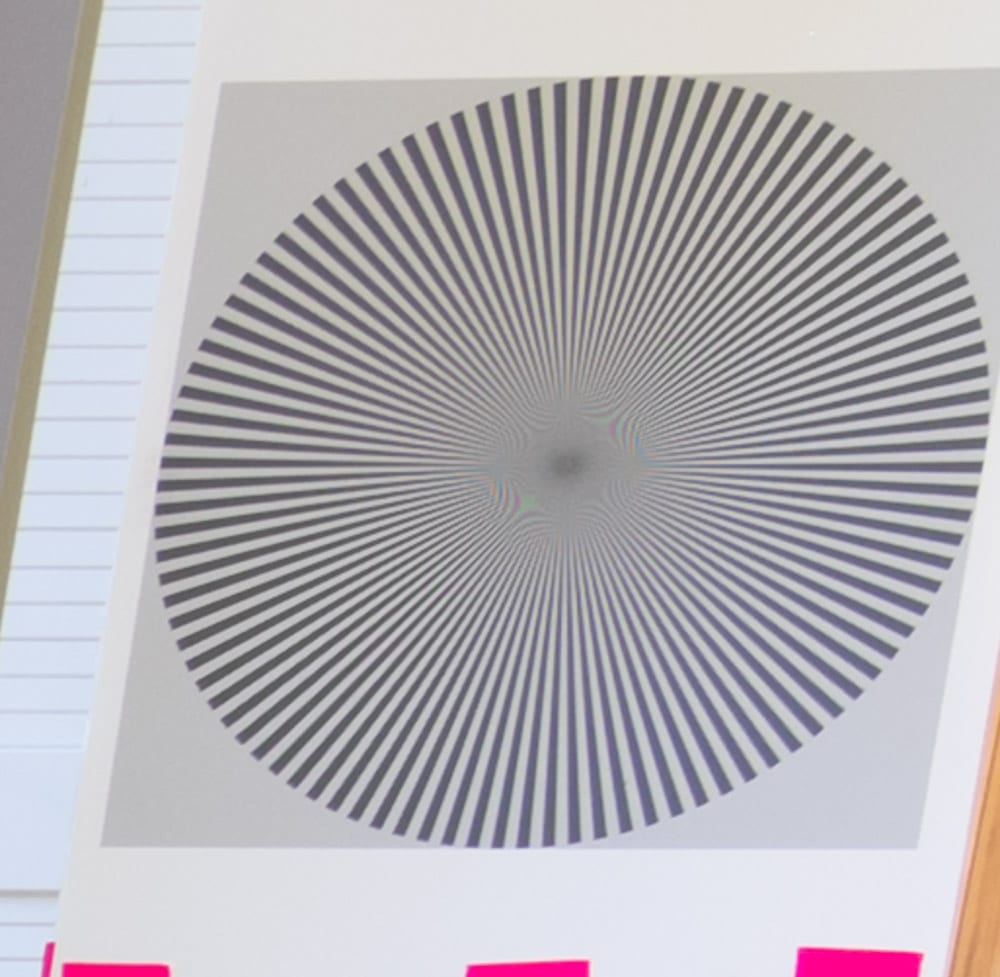
Now they’re about the same.
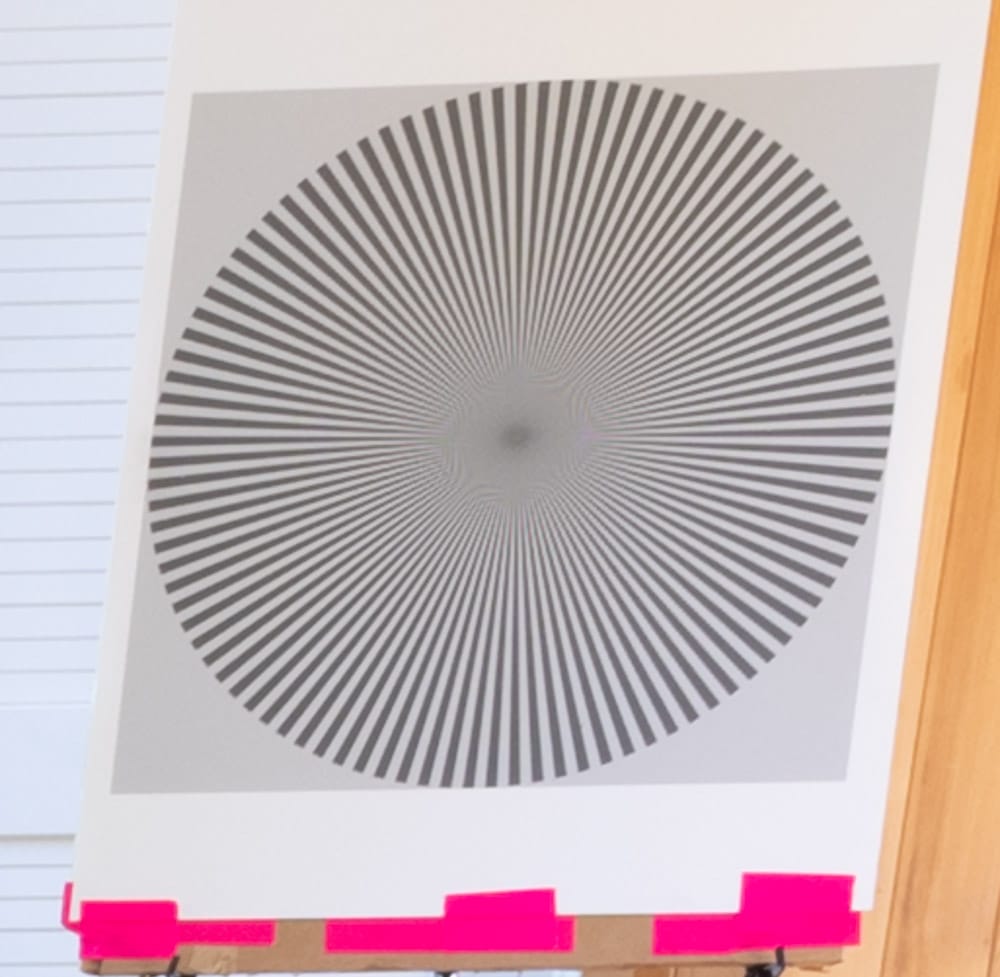
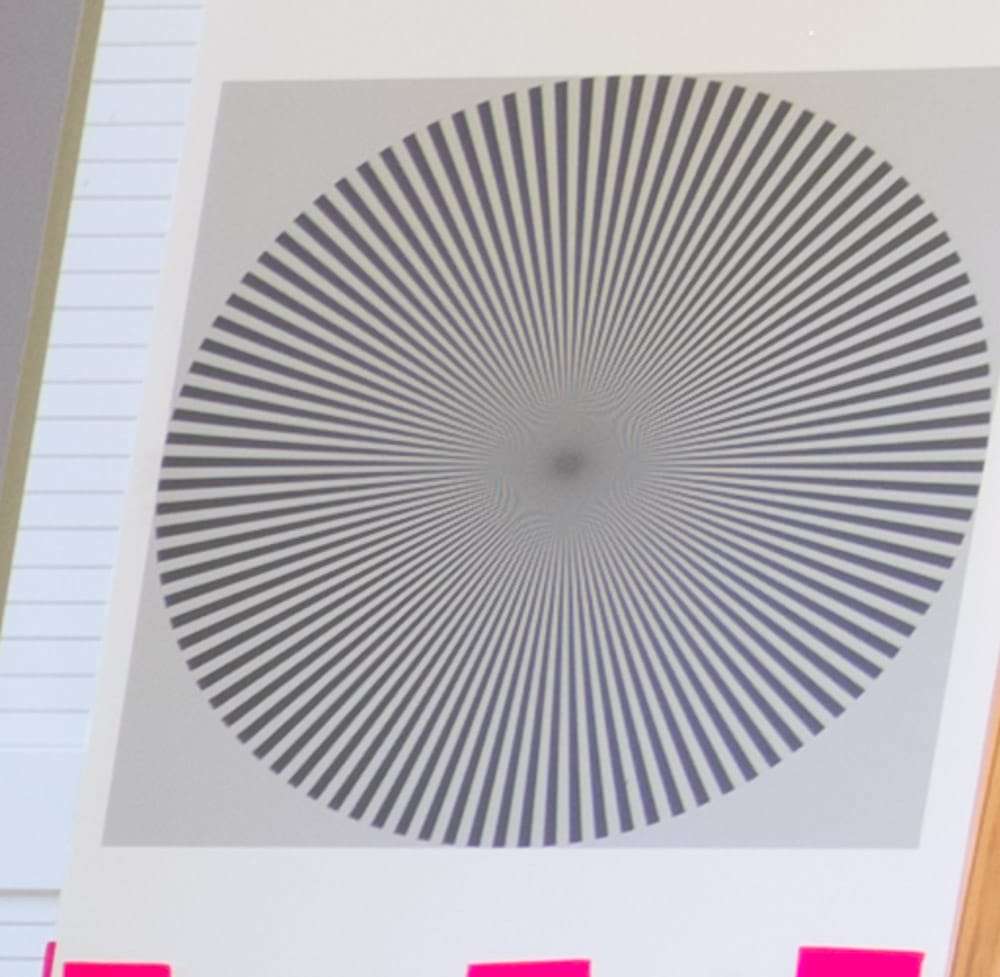
Also about the same, with diffraction providing some softening.
With the GFX 50S, if sheer resolution is the criterion, and you don’t need edge-to-edge sharpness at f/5.6, there seems to be no reason to prefer the prime over the zoom. Of course, there are other criteria. I’ll be testing some of those.
Leave a Reply